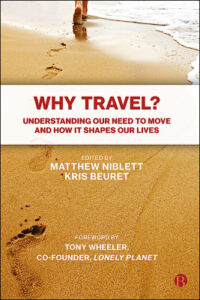Thousands watch Cunard’s ‘Three Queens’ mark the company’s 175th anniversary
27th May 2015

The Cunard ‘Three Queens’ (The Queen Mary 2, Queen Elizabeth and Queen Victoria) in Liverpool. Image: The Three Queens by Andrew, licensed under Creative Commons via flickr
The world’s largest ever ocean liner, the Queen Mary 2, was recently joined by sister cruise ships the Queen Elizabeth and Queen Victoria to perform a ‘river dance’ in the River Mersey, Liverpool. Thousands gathered to watch the three huge ships sail in formation accompanied by a display from the Red Arrows, in an event which marked the 175th anniversary of Cunard ships carrying passengers across the Atlantic.
The impressive spectacle captured not only the importance of passenger shipping in the history of the city of Liverpool, but our enduring fascination with ocean travel. Before aircraft, boats had been the only means to cross the Atlantic and with the invention of steamships in the early 19th century crossings became safer, ships were much larger and the journey far quicker. Travel by sea continued to grow throughout the first half on the 20th century and by 1957, ocean liners carried at least 1.3 million people ‘across the pond’, and of course many millions of passengers elsewhere around the world.[1] However, commercialisation of intercontinental jet aircraft in the decades after the Second World War was the trigger for a seemingly terminal decline. By 1958 aircraft were carrying more people across the Atlantic than ships were; in the following decades scores of regular ocean liners were taken out of operation and Cunard’s Queen Mary 2 is now the only dedicated ocean liner still sailing. The advent of air travel thus revolutionized trans-Atlantic and global travel, showing just how transitory our accustomed modes of transport (and the massive systems set up around them) can be.
But ocean travel has not died; far from it – cruising the oceans and inland waterways is booming in popularity, but with different aims and motivations than before. Ships and travel companies have re-invented themselves, focusing on luxury and entertainment over speed; cruising between exotic locations rather than rushing from A to B. Ocean cruising is growing an estimated 3% each year and river cruising, a smaller but even faster-growing market, increased by a massive 14% in 2012 according to Cruise Lines International Association (CLIA). An estimated 22 million passengers will be carried on ocean cruise liners this year and cruise companies are building new ships and diversifying the types of attractions they offer in order to appeal to different types of holiday-makers.
What are the reasons for this popularity and can it tell us anything about why we travel? Travel by boat certainly goes deep into our evolutionary past, with the first boats possibly invented by the ancestors of modern humans, Homo erectus, some 800,000 years ago.[2] But why do we choose to travel by boat now, when we don’t have to? Some passengers may enjoy the slower pace of travel, a chance to relax and appreciate the distance travelled – as T. S. Eliot observed, ‘the journey not the arrival matters.’ For these passengers the journey may be as important as the destinations on route; indeed the ship itself, a ‘floating city’ of entertainment and luxury, may be the destination. Cruises also enable people to stop-off in multiple tourist sites with little effort in terms of organization, risk or difficulty adjusting to another culture and language. Is this just then, as detractors may say, travel without the sense of wonder, uncertainty and human connection? Travel stripped of the elements that give it true value? Or is it travel that fulfills different needs? The need for pure escape, for relaxation and fun, for human connection – with other passengers, even if not other cultures. Whichever it may be, the motivations behind cruise travel are quite distinct from the purely functional economic view of travel as derived demand, or from the educational and transformational qualities often espoused by those who see themselves as ‘travellers’.
As with the tourist industry as a whole, cruise travel is growing and so are its environmental, social, and economic impacts. The Independent Transport Commission believes that understanding what motivates people to travel – and why they choose to travel in the way that they do – is a crucial part of better planning for the future, anticipating transport revolutions and helping to manage the impacts. To this end, the ITC’s Why Travel? project explores the fundamental motivations for travel from a wide range of perspectives and offers important lessons for the future. For more information on the project, including expert views from across the arts, sciences and humanities, see www.whytravel.org
[1] Norris, Gregory (1981) Evolution of Cruising. Cruise Travel December 1981
[2] http://www.iro.umontreal.ca/~vaucher/History/Prehistoric_Craft/


